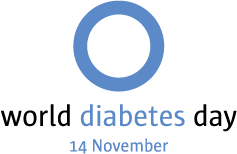As a data analyst living with type 2 diabetes, I have a unique perspective on the intersection of data analytics and health outcomes. The power of data analytics is transforming the way we manage chronic diseases such as type 2 diabetes, leading to improved health outcomes and quality of life for patients.
Data analytics can significantly improve health outcomes for people with Type 2 Diabetes (T2D) in several ways:
- Predictive Analytics: Data analytics can be used to build predictive models that forecast health outcomes for individuals with T2D. These models can use patient data such as history of comorbidities and medications to predict future health outcomes, including life expectancy. Predictive analytics can also identify patients who are likely to benefit from intensified treatment, thereby improving health outcomes at lower costs.
- Patient-Generated Health Data (PGHD) Analysis: Large volumes of PGHD can help detect patterns of health behavior in people living with T2D. This can provide insights into current health behaviors and make predictions about future health outcomes.
- Intervention Evaluation: Data analysis can be used to monitor and evaluate the effectiveness of interventions. This involves collecting and analyzing data on the process and outcomes of interventions, such as changes in blood glucose levels, complications, quality of life, and patient satisfaction. The data can then be compared with baseline data and expected results to identify achievements, challenges, or areas for improvement.
- Big Data Analytics: Big data analytics can provide real-time analyses of large sets of varied input data to diagnose and predict complications of diabetes. This can lead to improvements in managing chronic diseases.
- Real-Time Health Data and Health Information Technology (HIT): Real-time Electronic Health Record (EHR) data provides a high-volume data source that can be used to assess the social needs and place-based social determinants of health (SDOH) of patients with T2D. This can help in reducing diabetes risk.
- Data-Driven Modelling: Data-driven models can simulate the occurrence of diabetes-associated complications and all-cause death for T2D patients over their lifetime.
- Data Analytics Suite: A data analytics suite can be developed for exploratory, predictive, and visual analysis of T2D data. This can help clinicians and patients formulate strategies for diabetes management.
Data analytics is a powerful tool in improving health outcomes for people with T2D by enabling predictive modeling, intervention evaluation, behavior pattern detection, real-time health data analysis, and data-driven modeling.
Please visit https://jcst2d.com/ to learn more about type 2 diabetes.
Frequently Asked Questions
How do patients contribute their data for analysis, and what are the privacy implications?
Patients contribute data through various means including electronic health records, wearable devices, and mobile apps. Privacy is protected by laws like HIPAA in the U.S., ensuring data is anonymized and securely handled to prevent unauthorized access.
What are some specific examples of interventions that have been evaluated using data analytics, and what were their outcomes?
Specific examples might include programs aimed at lifestyle modification, medication adherence, or remote monitoring systems. Outcomes often measure improvements in glycemic control, reduced hospital admissions, or enhanced patient engagement.
How accessible are these data analytics tools and models to healthcare providers, especially those in resource-limited settings?
These tools' accessibility varies widely. In resource-rich settings, hospitals and clinics might integrate sophisticated analytics into their systems. However, in resource-limited settings, the high cost and technical requirements can be significant barriers, though simpler, low-cost solutions are being developed to bridge this gap.







